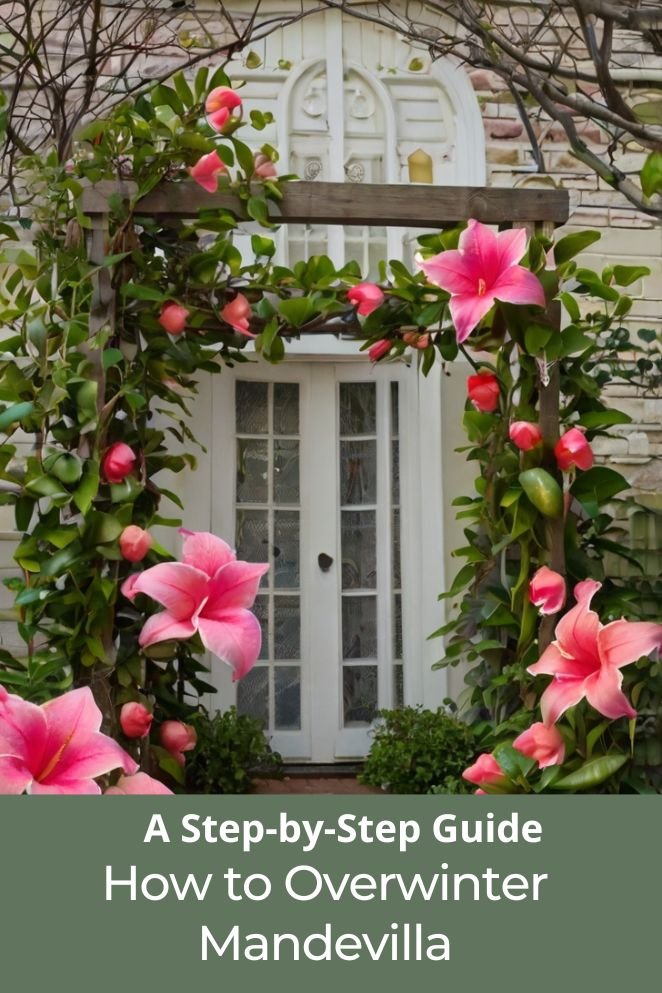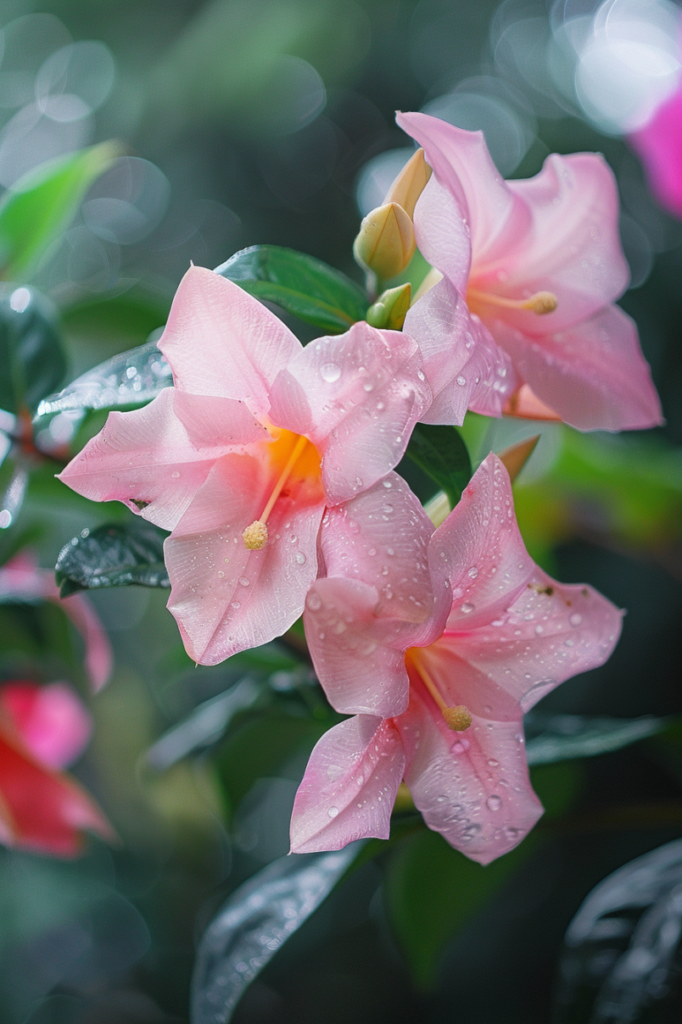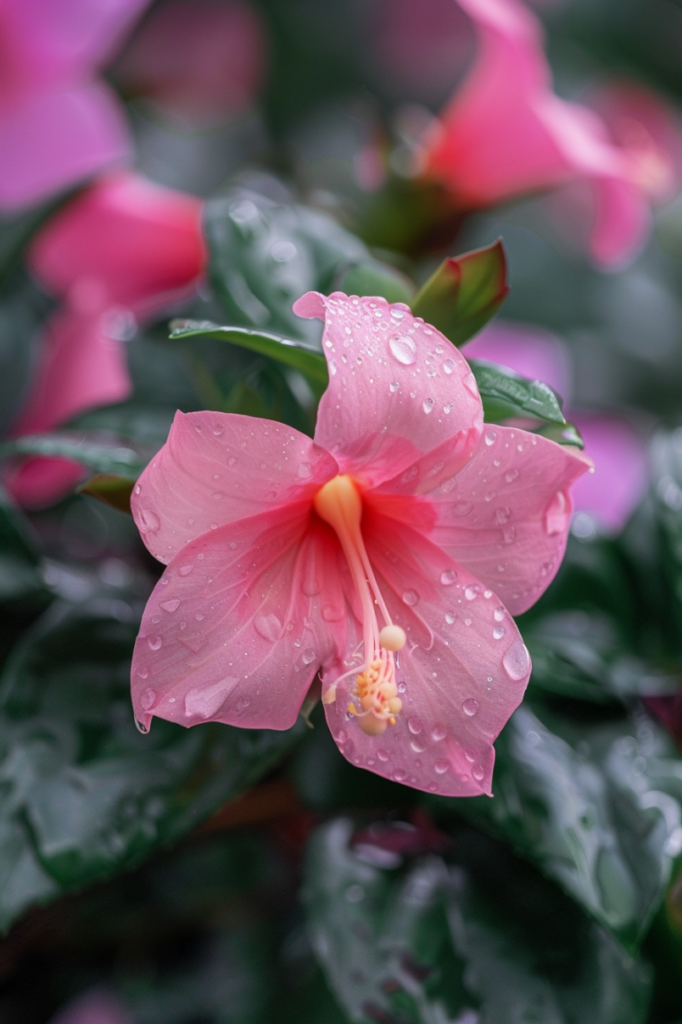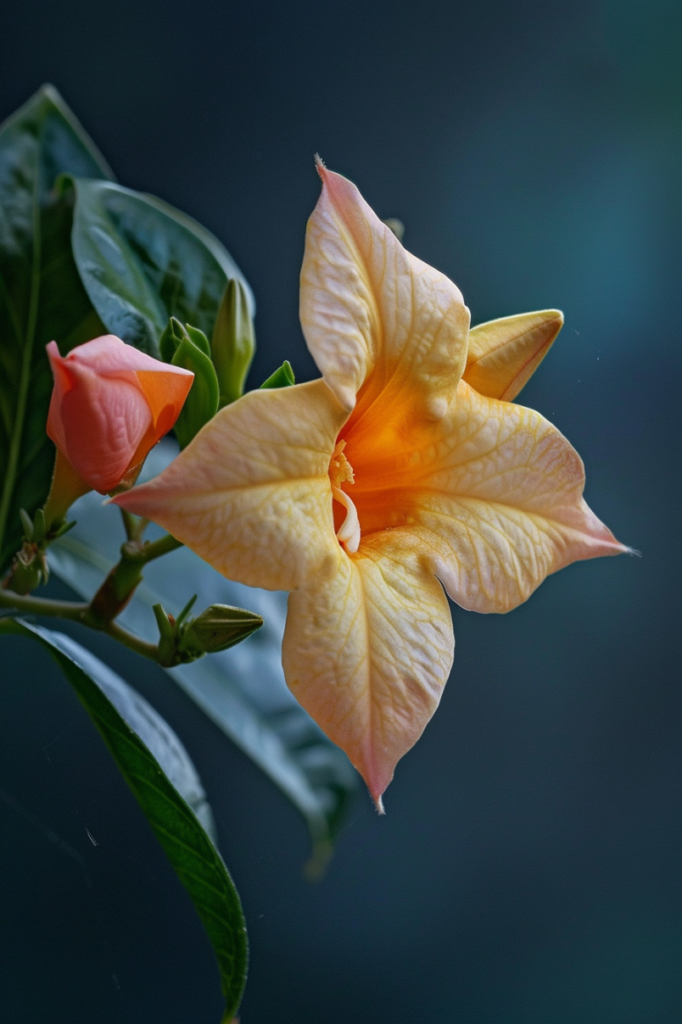
Mandevilla, with its stunning flowers and lush vines, adds a touch of tropical beauty to gardens and landscapes.
However, colder temperatures can pose a challenge for this tender plant.
In this comprehensive guide, we’ll explore how to successfully overwinter mandevilla, ensuring it stays healthy and ready to bloom again come spring.
Understanding Mandevilla’s Needs
Mandevilla plants, originally from South America, prefer warm and sunny environments to thrive.
They are sensitive to cold weather and frost, which can harm or even kill them.
To successfully overwinter mandevilla plants, it’s crucial to replicate the conditions they prefer during their growing season as closely as possible.

2 Main Overwintering Methods
Mandevilla plants need special care during the winter months, especially if you live in a region with cold temperatures.
Here are two effective methods to ensure your mandevilla survives and thrives:
- Read also: Don’t Say Goodbye! How to Overwinter Your Pepper Plants
- Read also: Stress-Free Winterizing: Tips on How to Overwinter Strawberries
Bringing Mandevilla indoors
When temperatures start to drop below 60°F (15°C), it’s time to bring your mandevilla plant indoors to shield it from the cold.
Here are some steps to keep your plant healthy indoors:
Timing is important
Bring your mandevilla indoors before it gets too cold, typically in early to mid-fall depending on where you live.
This helps protect it from chilly weather that could harm its delicate leaves and flowers.
Size matters
Before bringing it inside, trim your mandevilla so it fits comfortably in your indoor space.
Cutting back any long branches reduces stress on the plant and makes it easier for you to manage indoors.
Light it up
Place your mandevilla in a bright spot with indirect sunlight.
A south-facing window is ideal because it provides plenty of light without direct sun that might burn the leaves.
If natural light isn’t enough, consider using grow lights to give your plant the light it needs to stay healthy.
Watering advice
Water your mandevilla about once a week during winter.
Let the top inch of soil dry out between waterings to prevent soggy soil, which can cause root rot.
Check the soil regularly to see if it needs watering, as indoor conditions can vary.
Blooming expectations
In winter, your mandevilla may not bloom as it goes into a resting phase.
This is normal, so don’t worry if you don’t see flowers during this time.
With proper care, it will bloom again when the weather warms up and conditions improve in spring.

Overwintering in a dormant state
Overwintering your mandevilla plant in a dormant state ensures it stays healthy and ready to bloom again in spring.
Here’s how you can prepare and care for it during the winter months:
Prepping for rest
Before bringing your mandevilla indoors for winter, give it a thorough watering to flush out any pests that might be hiding in the soil.
Trim the plant back by about 10 inches (25 cm) to promote new growth once the weather warms up in spring.
Finding the perfect spot
Choose a cool and sunny location indoors for overwintering, where temperatures range from 55-60°F (12-15°C).
Good options include an unheated garage, basement, or an insulated porch.
This environment mimics the plant’s natural dormancy conditions and helps it conserve energy.
Minimal hydration
During winter, water your mandevilla sparingly to prevent the soil from drying out completely.
Check the soil moisture regularly by inserting your finger into the soil up to the knuckle. If the soil feels dry, water the plant lightly.
Overwatering can lead to root rot, so it’s essential to monitor moisture levels carefully.

Tips for Success
Overwintering your mandevilla indoors is important to protect it during the colder months.
Here are practical tips to help you do it right:
Monitor temperature
Keep an eye on the indoor temperature where you place your mandevilla.
Aim for a consistent range of 55-60°F (12-15°C).
Avoid placing it near heaters or in drafty areas, as temperature fluctuations can stress the plant.
Inspect for pests
Regularly check your mandevilla for pests like aphids and spider mites.
These pests can thrive indoors during winter. Look for signs such as tiny bugs, webs, or yellowing leaves.
If you spot pests, gently wash the plant with water or use an insecticidal soap to remove them safely.
Avoid drafts
Protect your mandevilla from cold drafts near windows, doors, or vents.
Drafts can lower the temperature around the plant and harm it.
Use insulation around windows or move the plant to a spot away from direct drafts while still ensuring it gets enough light.
Fertilize sparingly
During winter, mandevilla enters a dormant phase and doesn’t need much fertilizer.
Hold off on fertilizing until spring, when the plant starts growing again.
This helps prevent stimulating growth when the plant should be resting.

- Read also: A Beginner’s Guide: Tips on How to Overwinter Begonias
- Read also: A Guide for Lush Blooms! Tips on How to Prune Hydrangeas
Conclusion
Successfully overwintering mandevilla is a rewarding endeavor that preserves its beauty for the next growing season.
Whether you choose to bring it indoors or prepare it for dormancy outdoors, following these guidelines will ensure your mandevilla remains healthy and vibrant.
With proper care and attention, you’ll enjoy lush blooms and vigorous growth year after year.
FAQs
No, mandevilla is sensitive to frost and freezing temperatures. It’s essential to bring it indoors or protect it during winter.
Monitor temperatures closely. When nighttime temperatures consistently drop below 60°F (15°C), it’s time to bring mandevilla indoors.
Yes, pruning helps manage the plant’s size and encourages new growth. Cut back by about 10 inches (25 cm) before overwintering.
It’s normal for mandevilla to drop leaves during dormancy. Ensure proper watering and light conditions to support new growth in spring.
It’s best to wait until spring when the plant is actively growing for successful propagation.



